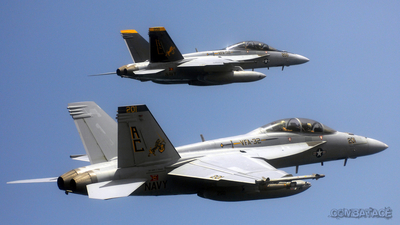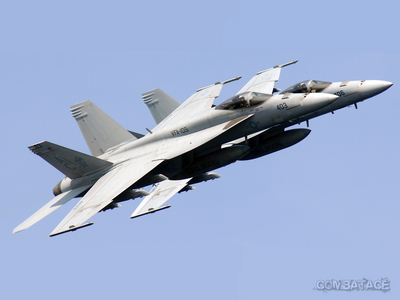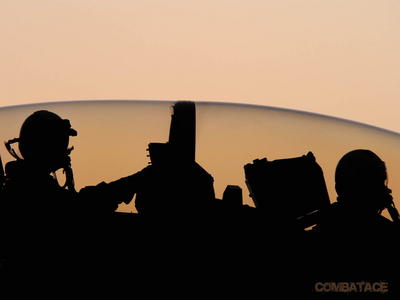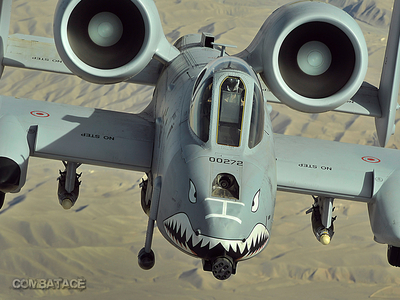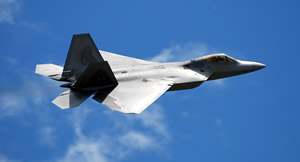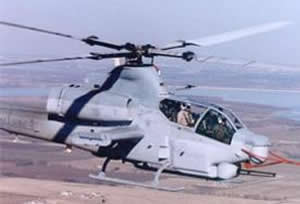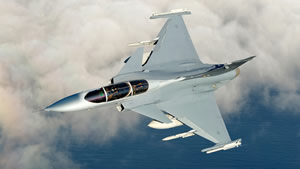-
Posts
6,754 -
Joined
-
Last visited
-
Days Won
38
Content Type
Profiles
Forums
Gallery
Downloads
Store
Everything posted by Erik
-
In SimGolf you'd play as a course owner, developer, manager. In Greens Keeper you'd play as a more challenging role of support staff. It adds that extra edge needed to make it more alluring.
-
They all miss the boat when it comes to the ultimate simulation game. I thought of this brilliant idea a couple years ago. Greens Keeper - A golf course greens simulation. - Design your own golf course or play from a list of courses from around the world. - Build your skills and equipment inventory to oversee increasingly challenging courses. - Start with a push mower and with course profits purchase upgrades and new mowers. - Timely reseed courses to keep them green and adjust their water and nutrients. - Plants and shrubs mature, die, and need replanting. - Replace course divots, rake the sand traps, and trim the shrubs. - Build your empire and hire support staff to help you. - Course popularity is determined on the job you do and increases profits. - Deal with unruly golf pros, club house staff, and course managers. - Manage your assets to keep the course facilities and grounds clean. - Stock and manage the water hazards or put on SCUBA gear and dive for lost golf balls. - Manage threats from wildlife, patrons, and rodents destroying your course. - Natural disasters from hurricanes, tornadoes, hail, drought, flooding, and insects. - Drive the ball collector on the driving range or watch the golfers by driving the booze cart. - And much more. This documents my idea and creation and I reserve all intellectual and artists rights. I will accept offers to produce this heralding new simulaton. My rights can be licensed for a standard 10% of the net profit.
-
What? What? Thirty-five? Happy Birthday!
-
Hooah! Thank you for your commitment and service, we're all grateful and proud of you. Here's to the next 40 years of success.
-
Homes on fire after explosion reported in California SAN BRUNO, Calif. — A massive fire is roaring through a mostly residential neighborhood in the San Francisco suburb of San Bruno. Firefighters from San Bruno and surrounding cities are battling the blaze that started on a hillside and is now consuming homes in a residential neighborhood. Television live shots show at least a dozen homes destroyed, with flames reaching now as high as 50 to 60 feet into the air. A South San Francisco fire official confirmed earlier that firefighters were responding to a fire, but had no other details. Witnesses say a loud explosion was felt just before the flames erupted around 6 p.m. Thursday. The fire is burning in a mostly residential area a few miles from San Francisco International Air, but the Federal Aviation Administration and a spokesman for the airport say they have no record of a plane crash. THIS IS A BREAKING NEWS UPDATE. Check back soon for further information. AP's earlier story is below. SAN BRUNO, Calif. (AP) — Live television footage is showing flames shooting at least 20 feet high into the air and burning homes in a San Francisco suburb. A South San Francisco fire official confirmed Thursday evening that firefighters were responding to a blaze in San Bruno, but had no other details. Witnesses say a loud explosion was felt just before the flames erupted around 6 p.m. Thursday. The area where the fire is burning is in a mostly residential neighborhood. Chron
-

Eliminate co-pilots to save cash, says Ryanair CEO
Erik replied to Dave's topic in Military and General Aviation
Publicity stunt. Next he'll eliminate all non-essential hardware aka the plane. Tickets will now include a one way sling-shot ride to your destination. The upsides include: No worry, no hassle, anytime use bathrooms. ZIP UR-IN. Guaranteed no extra baggage fees. If the ride doesn't kill you that 200 pound suitcase you are carrying will. No long waits at security check points and scanning. Go ahead bring some C4. Got matches? Oh look fireworks! No charge aerobic workout program included. Want more hang-time, flap harder. RyanAir we spare no expense at finding expenses to spare. -

Video Game Pulled Globally From Military Stores Over Taliban Inclusion
Erik replied to FastCargo's topic in CombatACE News
Simple. Out of respect for the lives that were lost fighting against such forces. It has been mentioned that this is not about banning or preventing the purchase of a game where you can play from the opposition's POV. This is about not making a mockery of the blood that has been shed by our armed forces. As an American I not only understand but I support the decision 200%. [ Take a moment to remember someone who lost their life for this country. ] [ Pause ] [ Thank you.] -
Luckily the chances of a wind turbine squawking an ident have been fairly rare. :Controller: Unknown windmill north east of the field, Fairbanks Approach, IFR cancelled, contact tower on one one two point niner zero, good day.
-
Absolutely deliberate. You don't put that many hours in a big girl like that and not know when she's not coming back.
-

Upload question
Erik replied to amariani's topic in Thirdwire: Strike Fighters 2 Series - General Discussion
Nichts zu danken. -
Well my point exactly and I'm not saying I'd like to punch out of a 47 ahead of those big fans but it's a strong argument for a decent evac plan on cargo birds.
-

Upload question
Erik replied to amariani's topic in Thirdwire: Strike Fighters 2 Series - General Discussion
Click the Downloads Link in the menu bar above. On the main downloads page toward the top just above the category listings you'll see a button to upload. http://combatace.com/index.php?app=downloads&module=post§ion=submit&c= Looks like this, link above. -
Tragedy. Way too early to speculate on anything but the dubious smoke in the cabin and loss of avionics both forward are not good signs. The high approach leaves you to wonder if they weren't seeing three green down and locked with their tanks full of fuel. Definitely a lot to manage even for two very experienced 47 drivers. Usually when things go wrong in such a redundant platform they're unrecoverable. Makes me always wonder why the SOP for a two crew bird with no passengers wouldn't have been to punch out while putting the aircraft into the Persian Gulf. FC what's Fred's policy? E
-
Hawk Advanced Jet Trainer Offers Strong Bilateral Economic Benefits Defence Professionals -- 16:14 GMT, September 1, 2010 WARSAW, Poland | Poland’s plans to procure a new advanced jet training system can act as a catalyst for Polish industry in a number of industrial sectors, not just in aerospace and defence, according to Alan Garwood, group business development director at BAE Systems - the world’s second largest defence, security and aerospace company. Speaking ahead of his company’s participation in the MSPO defence exhibition in Kielce (September 6-9) Garwood said that a key requirement for the Polish government should be ensuring that large defence procurements, such as the advanced jet trainer programme, sustain Polish jobs and support the development of skills and high-end technology transfer, through mutually beneficial industrial partnerships. “BAE Systems delivers on its promises and has an unrivalled track record of producing economic and industrial benefits for its customers, in support of defence equipment sales,” Garwood says. “If our Hawk advanced jet trainer is selected to meet Poland’s new generation pilot training requirements, it will present opportunities for Polish industry to become part of a global supplier network, not just of BAE Systems but also its partners such as Rolls-Royce, which already has a significant presence in Poland. “This would give Polish companies access to and involvement in the development of the latest emerging technologies in both the defence and commercial business sectors,” he adds. In neighbouring Czech Republic, where BAE Systems is delivering a 10 year US$1.3 billion industrial partnership programme in support of the Gripen fighter lease, delivery is approaching 80% of requirement, some 2 years ahead of plan. “Our approach has been to provide Czech companies with access to inward investment, export promotion, research and development and manufacturing opportunities, linked to the global footprint of BAE Systems and its supplier base,” states Garwood. BAE Systems will be using its participation in MSPO Kielce to highlight its capabilities in the land systems, security and aerospace sectors, with a particular focus on its ability to meet Poland’s stated need for a new fast jet pilot training system. The company’s Hawk advanced jet trainer is already training frontline pilots to fly the world’s most advanced and capable combat aircraft, including F16 Block 50/60, F18 Super Hornet, F35, Su30, Gripen and Eurofighter Typhoon. Air powers ranging from Australia to the United States, with 20 others in between, choose Hawk to meet their lead-in fighter trainer requirements. Last month, India committed to buying a further 57 Hawk advanced jet trainers, in addition to the 66 already in manufacture. These aircraft, to be built in India through a partnership with local aerospace company Hindustan Aeronautics, will be used to train Navy and Air Force pilots in preparation for flying the Su30 and India’s next generation fighter aircraft. Eurofighter Typhoon, Gripen NG, F18 Super Hornet and a number of other combat aircraft are currently being evaluated by the Indian MoD. The advanced training systems built into today’s new generation Hawk jet trainers enable one aircraft to carry out a number of tasks, for which its rivals may need two or more aircraft. “Today’s Hawk advanced jet trainer will be training some of the world’s most capable frontline pilots for decades to come. It builds on a pedigree of success, established by previous generations of this highly successful platform which, although entirely different to today’s aircraft, share the same name,” comments Garwood. “For Poland, we will offer a low risk solution based on the aircraft selected by the UK to train its frontline F-35 and Eurofighter Typhoon pilots. This will provide a seamless entry into service and delivery of the required training capability, from day one.” Defence Professionals
-
F-22 Raptor fleet consolidated Examiner -- By Pierre A. Kandorfer The US Air Force is in the process of redistributing the F-22 flight squadrons. The Secretary of the Air Force and the chief of staff of the Air Force determined the most effective basing for the F-22. This requires redistributing aircraft from one F-22 squadron to units at four F-22 bases. A second squadron will be relocated to an existing F-22 base. The affected Air Force bases are: • Holloman Air Force Base, N.M.: Deactivate one squadron of F-22s and disperse that squadron's aircraft to other F-22 units. Relocate the remaining squadron to Tyndall Air Force Base, Fla. • Elmendorf Air Force Base, Alaska - receive six additional aircraft • Langley Air Force Base, Va. - receive six additional aircraft • Nellis Air Force Base, Nev. - receive two additional aircraft • Tyndall Air Force Base, Fla. - receive one additional squadron "This plan maximizes combat aircraft and squadrons available for contingencies," said Kathleen Ferguson, deputy assistant secretary for installations. "By consolidating aircraft at existing bases, F-22 operational flexibility is enhanced." Several teams surveyed four F-22 bases, evaluating them for feasibility, timing, cost, and planning purposes to accept additional F-22 aircraft. The secretary of the Air Force and the chief of staff of the Air Force carefully considered the site survey results and military judgment factors in making these basing determinations. These actions will be finalized subject to completion of appropriate environmental analysis. The F-22 Raptor combines stealth, super-cruise, maneuverability, and integrated avionics, coupled with improved supportability, and represents an exponential leap in war-fighting capabilities. Examiner
-
Lased and Confused: Off-the-Shelf Infrared Lasers Could Ward Off Missile Attacks on Military Helicopters Scientific American -- By Charles Choi A newly developed broad-spectrum laser mounted on choppers could effectively dazzle shoulder-launched antiaircraft weapons in flight, and prevent them from finding and destroying their targets. Helicopter-mounted lasers that can dazzle and defend against heat-seeking missiles are now under development, researchers reveal. The military often relies heavily on helicopters in areas such as Afghanistan, where rough terrain can make it hard for airplanes to land and for troops and vehicles to travel on the ground. However, as the Soviet Union discovered in the 1980s during their war there, copters are easy targets for enemies with shoulder-launched missiles, "and now, unfortunately, the U.S. is on the other side with Afghanistan," says Mohammed Islam, a laser and fiber-optics scientist at the University of Michigan at Ann Arbor. "To consider the magnitude of the problem, there are about 3,000 helicopters in the U.S. armed forces." Islam and his colleagues are now devising a way to protect helicopters from such attacks using off-the-shelf lasers. The missiles normally home in on aircraft by targeting the infrared radiation given off by the latters' engines; the lasers jam the sensors on these heat-seekers from up to three kilometers away by shining infrared beams at them, buying the helicopters enough time to maneuver away. Most lasers emit just one wavelength, or color. To deflect missiles, the researchers are employing what are known as mid-infrared supercontinuum lasers, or MISCLs, that give off a much broader range of wavelengths—from the visible (800 nanometers) to the mid-infrared (4.5-microns). (A nanometer is one billionth of a meter; A micron is one millionth of a meter.) Because these lasers emit such a broad spectrum, they inundate the opposing sensors with all the infrared wavelengths the missile might look for; any attempts by opponents to block these dazzling rays by painting reflective or absorptive coatings on the missile beforehand would also blind its sensors to the same wavelengths from the copter engine. Less than 10 percent of the light from the laser is a visible dim red; the rest falls within the infrared range. Altogether, the latest version of the device packs about 10 watts of power concentrated into a searing beam. "People who put their hands in its beam quickly move the hand away," Islam says. The new laser uses technology from the telecommunications industry, which relies on multiple wavelength lasers to create many highway lanes for data signals to travel within fiber optics. "It's a clever way of using lasers that you can essentially buy off the shelf," said laser scientist Anthony Johnson at the University of Maryland, Baltimore County, who did not take part in this research. Laser-based defenses have already found their way onto some aircraft, but the laser optics in these systems can currently have up to 84 moving pieces—precision components that can easily get knocked out of alignment by the rumbling on a copter. "Our lasers have no moving parts, which means they can withstand a helicopter's shake, rattle and roll," Islam explains. The hope is to replace the lasers in existing aircraft antimissile defense systems that detect and train beams on their targets. The system is being commercialized through Islam's company, Omni Sciences. In terms of weight current laser-based aircraft antimissile defense systems weigh on the order of 16 kilograms, whereas this new laser is more in the 4.5-kilogram range. When it comes to cost, "for our next prototypes, we'll probably have the parts cost $25,000 to $30,000, and with the packaging and testing we could probably sell it profitably for $100,000," Islam says. In comparison, laser-based aircraft defense systems today cost roughly $1 million, he explains. The researchers developed a first-generation, DVD player–size prototype for the U.S. Army in 2008, and are working on a second-generation, laptop-size device for 2011 that is four times more powerful. Although Islam says that helicopters probably face the greatest need for such laser-based protection against missiles, "it's potentially applicable to all aircraft," he suggests. Islam says the laser could also aid in border surveillance—the chemicals involved in explosives often emit specific light wavelengths when hit by infrared rays, which means these lasers might be able to detect guns and bombs from afar. "You could put them maybe a kilometer or two apart at borders to monitor someone passing, instead of having a border patrol agent every 60 feet," he says. Scientific American
-
Saab Courts Asia, Eastern Europe to Save Gripen Warplane Bloomberg -- By Howard Mustoe and Ola Kinnander Saab AB is stepping up a campaign to sell its Gripen warplane in Asia and eastern Europe as Switzerland’s decision to delay a $1 billion fighter purchase threatens to curtail production of the 1,320 mile-per-hour jet. Orders from Bulgaria, Romania and Slovakia and a follow-on contract from Thailand are “major near-term opportunities” for the Gripen, which competes with models from Lockheed Martin Corp., Boeing Co., Dassault Aviation SA and Eurofighter GmbH, Saab Aeronautics chief Lennart Sindahl said in an interview. Switzerland will wait until 2015 before awarding a contract to replace ageing Northrop F-5 Tigers, its defense ministry said on Aug. 25, halting a tender regarded as key to the Gripen’s future by analysts including Teal Group’s Richard Aboulafia. Saab is still betting on orders from Brazil and India to save the flagship fighter as the production backlog shrinks, with Malaysia another prospect, Hakan Buskhe, the company’s new chief executive officer, said in his first interview in the role. “We were a little bit sad that the Swiss postponed, but there was a tricky situation with the financing and I wasn’t totally surprised,” Sindahl said by telephone yesterday. “The good thing is that we haven’t lost the contract.” Saab rose 1.6 percent to 95 kronor in Stockholm, where the company is based, paring the stock’s decline this year to 19 percent and valuing it at 10.4 billion kronor ($1.4 billion). Dwindling Workload The Swedish manufacturer, which is competing with Dassault and Eurofighter in Switzerland, requires new orders as work on 26 Gripens for South Africa and an initial six planes for Thailand runs out in 2012, with an upgraded version not due to enter service with Sweden’s air force until at least 2017. Saab also needs export orders to establish the Gripen as the model of choice in former Soviet and non-aligned markets not dominated by Boeing and Lockheed Martin, which is grabbing contracts with its F-35 Lightning II Joint Strike Fighter. Saab’s ability to offer the Gripen with in-house radar technology is being pitched as an advantage over rival planes and helped it win the existing Thai order, Sindahl said. Still, the Gripen’s prospects have been harmed as delays to contract decisions bring newer models into the reckoning which were unavailable at the time of tender, said Sandy Morris, an analyst at Royal Bank of Scotland Group Plc in London with a “buy” recommendation on Saab stock. New Generation Regarded as the first of a new generation of fighter planes, the Gripen has been operational with the Swedish military since 1997, whereas the first Eurofighter Typhoon entered service in Britain, Germany, Italy and Spain in 2004. “The Gripen was a capable fighter-bomber long before the Eurofighter was anything more than a pure fighter and you’d have thought there was a window of five-to-seven-years to sell to export markets,” Morris said. “But unfortunately these competitions just kept shifting.” Saab views Brazil’s requirement for 36 jets as a live competition even after President Luiz Inacio Lula da Silva indicated last year that he favored the Dassault Rafale, Sindahl said, with no contract for the order yet signed. In order to boost its chances of winning the $1.8 billion deal Saab has offered to establish joint manufacturing of the Gripen in Brazil, which currently operates Dassault’s Mirage. ‘Good Offer’ “Every day that nothing new comes from Brazil I think we have gained a little bit,” Sindahl said. “The longer it takes, the more discussions there are and the more they start realizing how good the offer is both with respect to the product and also to the package for Brazilian industry.” South America’s biggest economy is unlikely to choose between the Gripen, Rafale and Boeing Co. F/A-18 Super Hornet before a presidential election in October, the executive said. India may announce the preferred supplier for a 126-plane requirement by the end of this year after scrapping an April 27 deadline to select a replacement for Russian-built MiG jets dating to the 1970s, Sindahl said. The $10 billion order is the world’s biggest fighter-jet purchase in 15 years and has attracted bids from Lockheed, Boeing, Dassault, Eurofighter and Russia’s United Aircraft Corp. Saab hasn’t given up on winning Dutch and Danish orders for the Gripen, CEO Buskhe said at the company’s Stockholm offices yesterday. The Netherlands has selected Lockheed’s F-35 as its preferred candidate and like Denmark is one of eight partner countries with the U.S. in developing the plane. Saab is also pursuing a contract to provide day-to-day maintenance for Swedish air force Gripens that could be sealed this year or early in 2011, Sindahl said. An agreement would mirror one to maintain Sweden’s Saab 105 jet trainers. Bloomberg -- To contact the reporters on this story: Howard Mustoe in London at hmustoe@bloomberg.net; Ola Kinnander in Stockholm at okinnander@bloomberg.net





